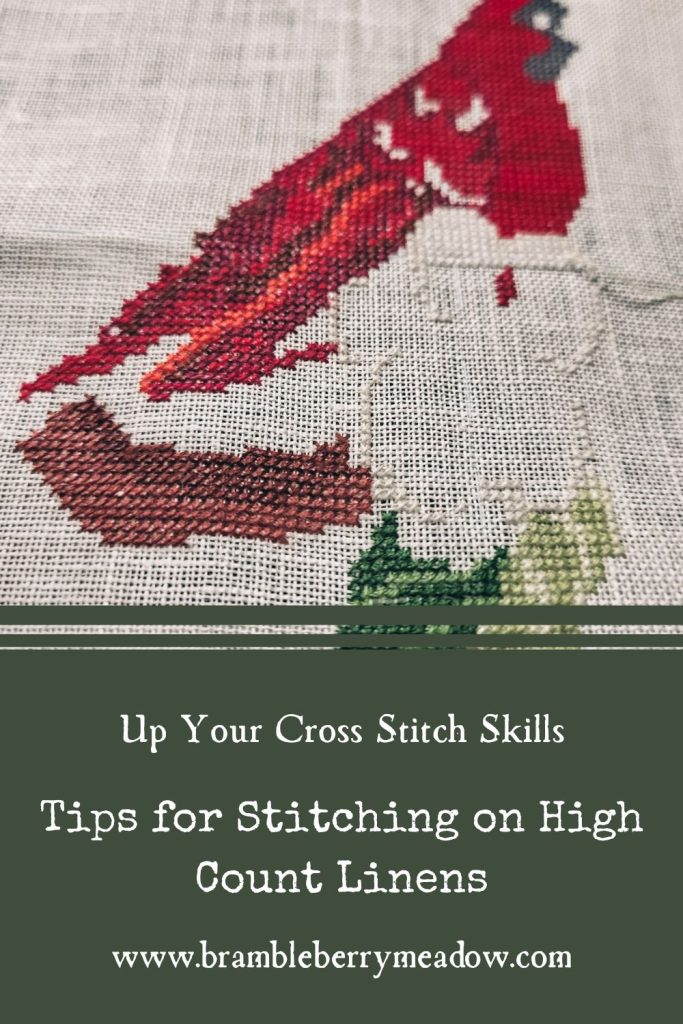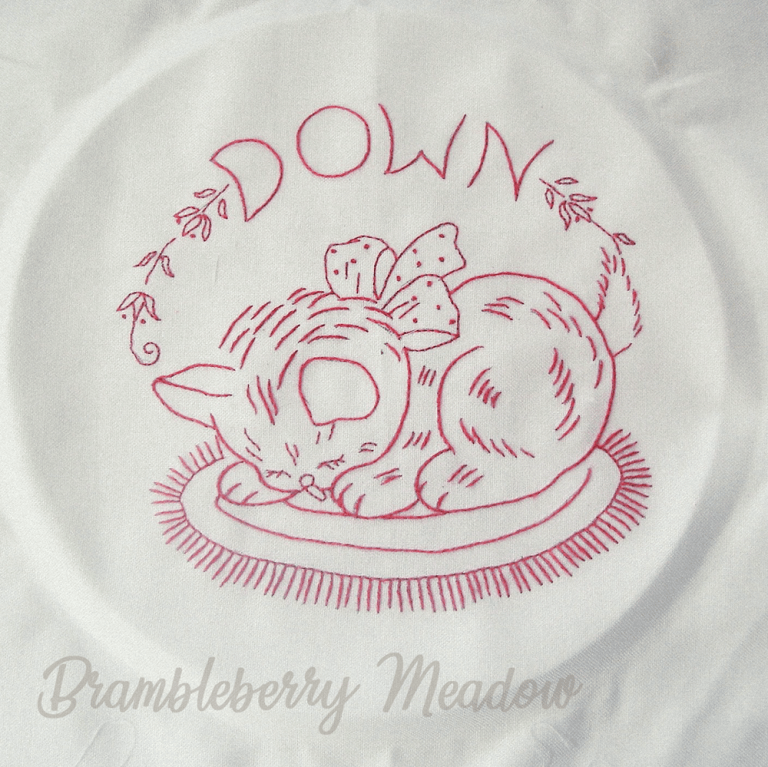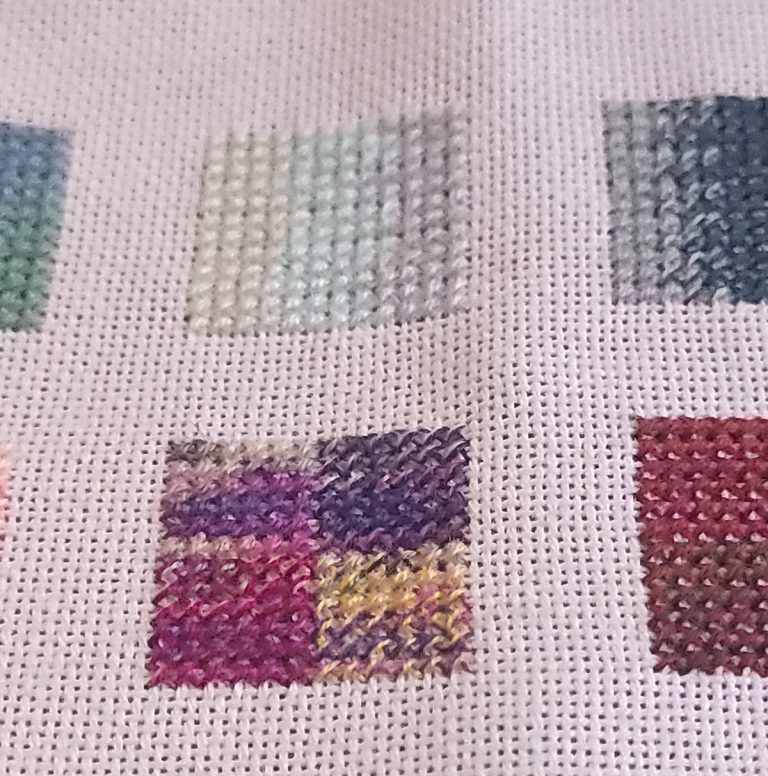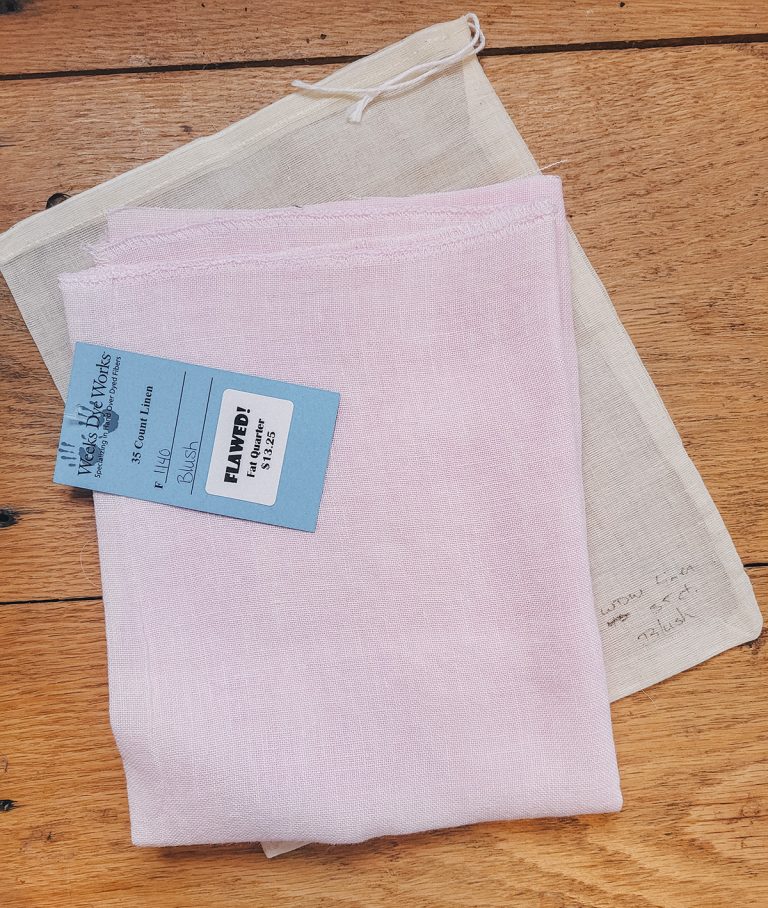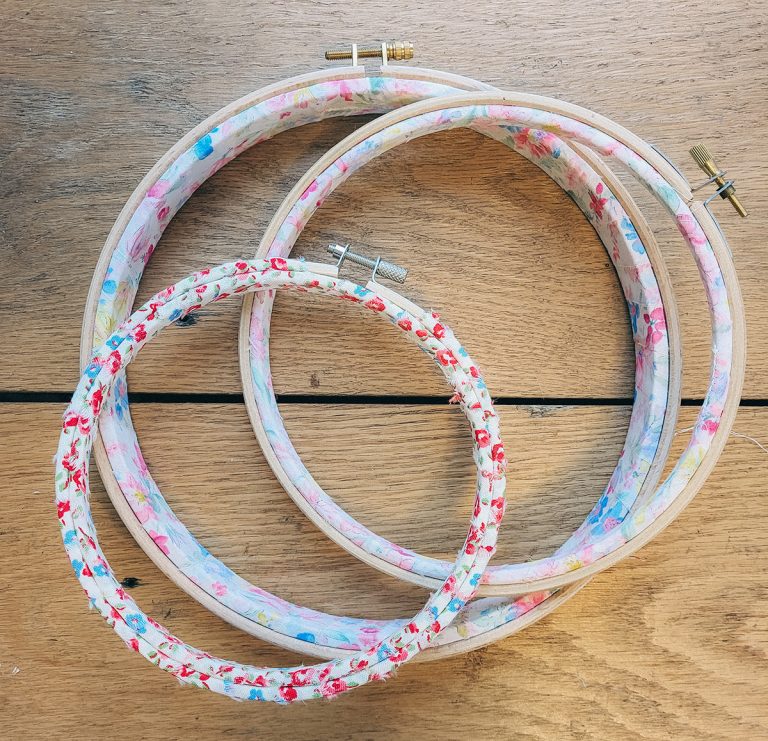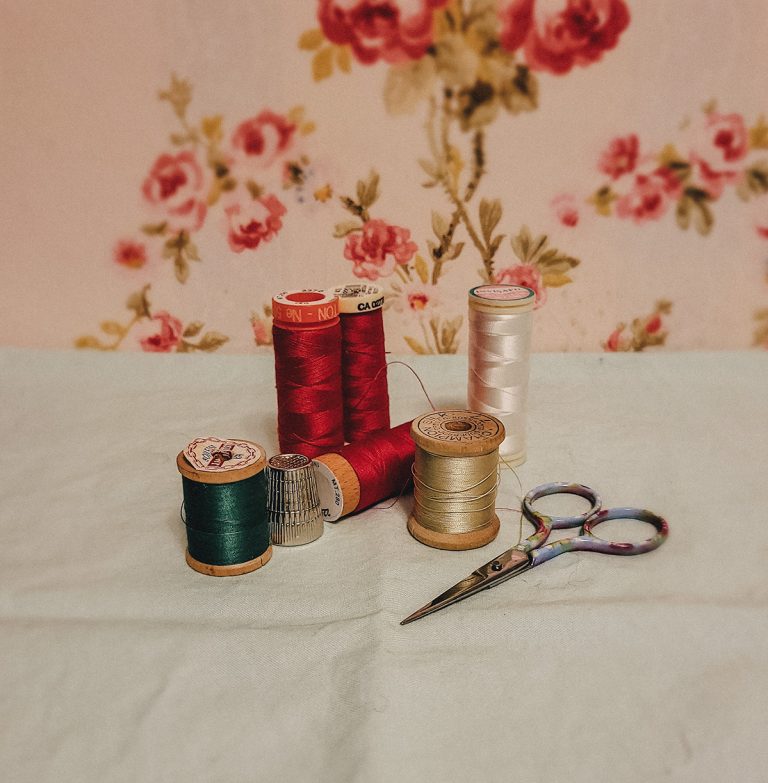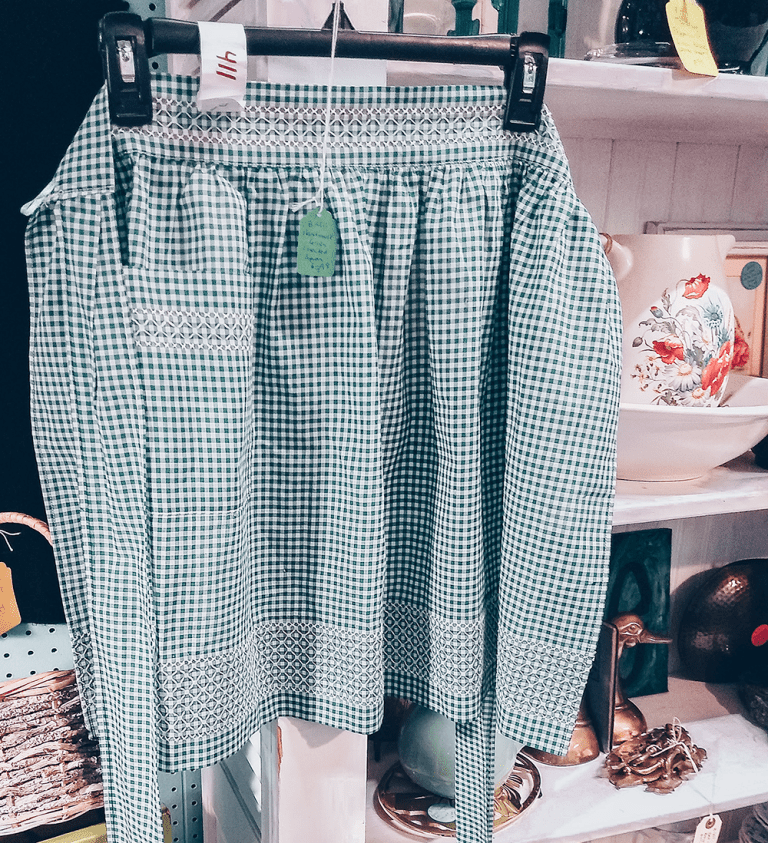Cross Stitch on High Count Linen
There seems to be a skill-progression among cross stitchers that moves from aida to linen to high count linen. I’m here to share some tips and tricks for stitching beautifully on those higher counts of linen. Think 40, 46, or even 56 count.
I’m going to assume an audience already reasonably comfortable stitching on linen. If you’re not, I suggest some practice on some 28 or 32 count linen. And I do like this tutorial from Jean Farish on the basics:
https://www.youtube.com/watch?v=cIXYsx4MPek
Now, you know how I feel about always learning new things. Well, stitching on higher counts of linen isn’t so much a “new thing” as it is an increased challenge. A little like raising the high jump bar. The technique is the same but the difficulty level goes up.
Why would you want to bother? A number of reasons. First, some pieces just look more elegant when stitched smaller. Or, the design might be so large that stitching it on 28 count linen would yield a piece so large it’s hard to frame and hang. Second, a lot of historical samplers were originally stitched on finer linens. So, if you’d like to make a “reproduction,” (and I”m not getting into that debate) you’ll need that finer linen yourself. In fact, some vintage samplers are stitched on linens that have a different number of threads on the vertical versus the horizontal.
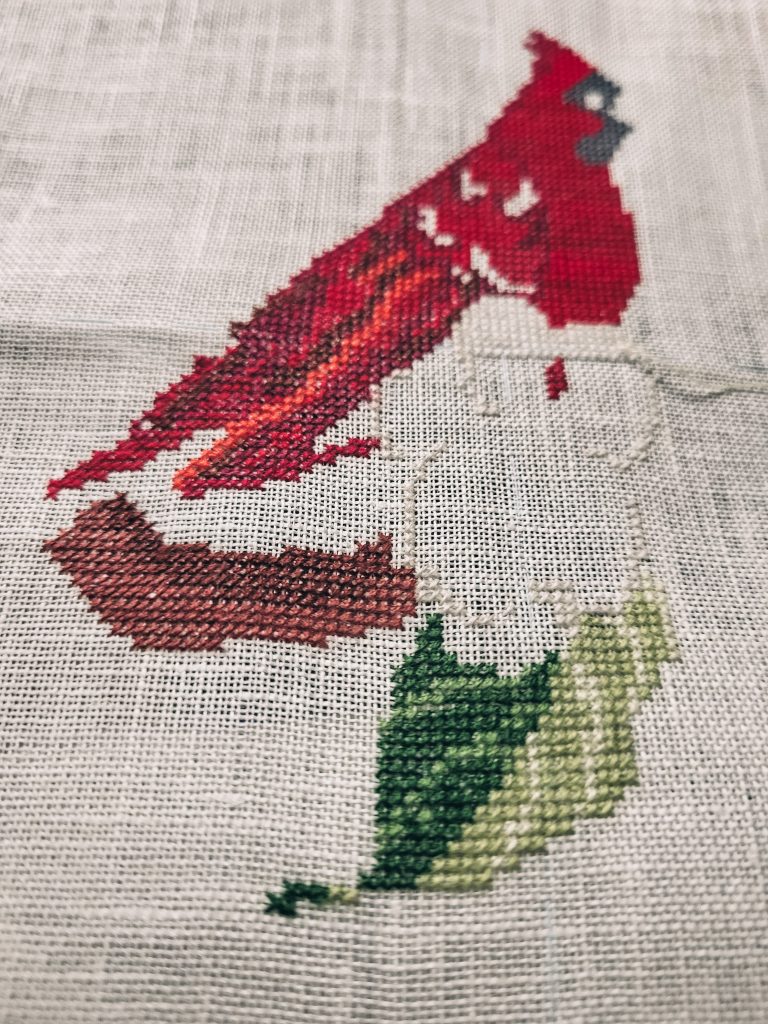
So, what about those tips?
First, use the right threads to stitch. For anything 40 count and above, you’ll want to use a single strand of cotton floss. Two threads will start to distort your fabric. Very high counts sometimes are better worked in silk. Stranded silks, which are a lot like DMC floss, in that you separate the strands to use them individually, are good on 40 and 46 count. They have a little less twist, and are slightly “poofier,” and so give a little more coverage. On very high counts, a more tightly twisted silk like Au ver a soie 100/3 will work perfectly.
Remember that, because your stitches are smaller, you’ll get more stitches out of a length of thread. And that means more passes through the fabric, and more wear and tear. Work with shorter lengths of thread – 18″ max. It’s also a good idea to wax your thread. (Don’t forget – you can get my recipe for thread polish in the 2024 Natural Home issue of Willow and Sage). That will minimize knotting and fraying of your thread. Also invest in some quality needles. Cheap needles often have burrs where they eye was cut to make them. These can snag or even cut your thread. My favorite are Bohin. I’m not at all fond of John James. But use what you’ve had good luck with. And choose the correct size needle. Most of the time, when you’re working on high thread count fabrics, you’ll want a sz 28 needle. You can even get “petite” needles that are a little shorter and can be easier to handle.
And, of course, the most difficult thing about using high count linens, is seeing what you’re doing. Always work in good light. Daylight is nice, but if you’re like me, sometimes the opportunity to stitch comes in the evening when things quiet down. Supplemental lighting is your friend. Nice, bright LEDs, for preference. Personally, I prefer a warm white light to a blue white LED, so I usually go for a daylight lamp. But use whatever helps you see. You can find lights that are floor lamps, desk lamps, clip ons, or even to wear around your neck.
I’ve had mixed luck with my light selections. I usually prefer a floor or table lamp, mostly because I have no luck getting a clip on to stay in place on the frames I prefer to use. And the necklight I own is very hard to aim where I’d like it. My best advice is: next time you go to a retreat, take a look at what other stitchers are using, and maybe even ask to try out some different options.
You’ll also want to make use of some sort of magnifying device. Your options include reading glasses, clip-on magnifiers, magnifiers that loop around your neck, or extra magnification lenses that clip on over glasses. Sometimes I’ve been known to use both reading glasses and an additional magnifier. Now, my normal “reading” magnification prescription is +1.5. That’s not what I use to stitch with. I have a selection of “Drug store” reading glasses that range from +2.5 to +4.0. And for the finer linens, I usually use the higher magnification lenses. I do know a lot of people who already wear glasses really like the clip on magnifiers. The Cadillac version is Craft Optics. But you can certainly get much less expensive versions. VisionAid is another popular option.
The last aid I recommend for helping you keep counts, especially when you’re stitching motifs separated from each other by larger areas, is to use some counting pins. And, While I have and love some Jersey Girl counting pins, those are a bit large and heavy for really fine fabrics. So I recommend finding (or making) some thinner, lighter versions. (I’ll link in a post on doing just that once it goes live, I promise!)
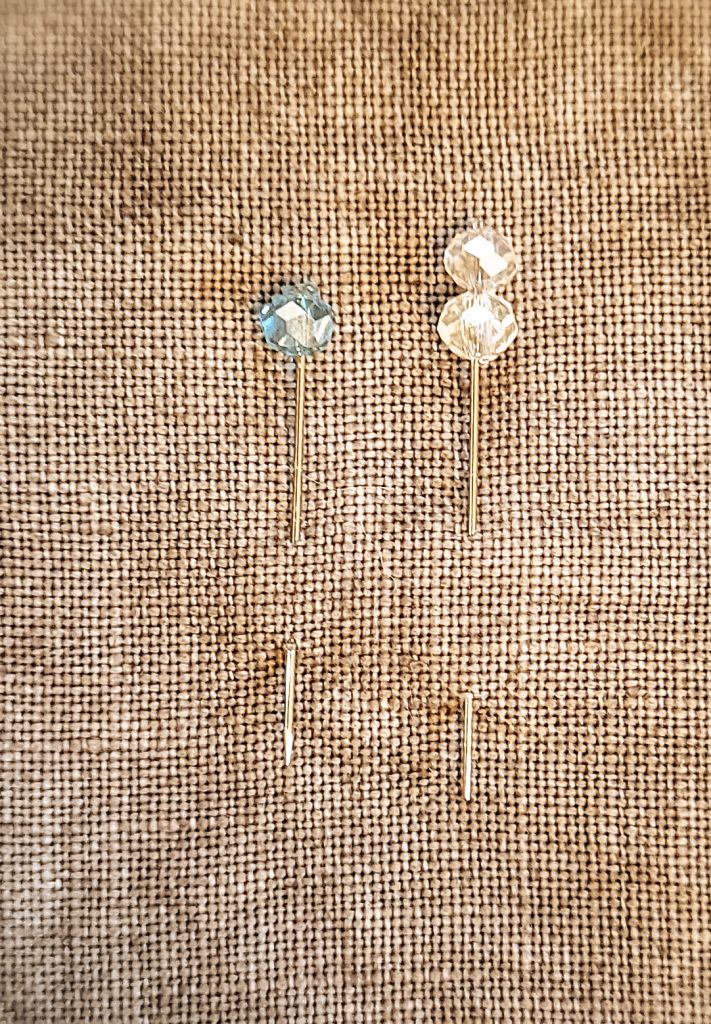
I hope that little list of tips gives you the confidence to try that high count linen you’ve been drooling over. Let me know and share a photo if you do!
And look for a post soon on making some fine gauge counting pins to use on that linen.

